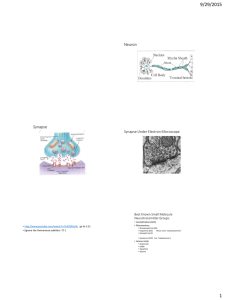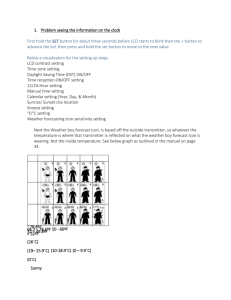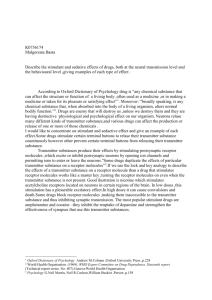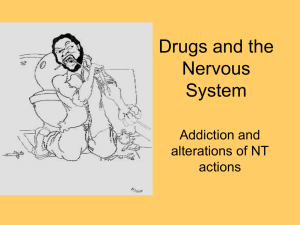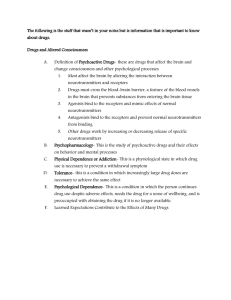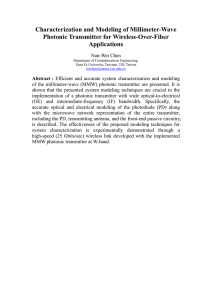1/28/2014 Structures Controlled by the ANS
advertisement
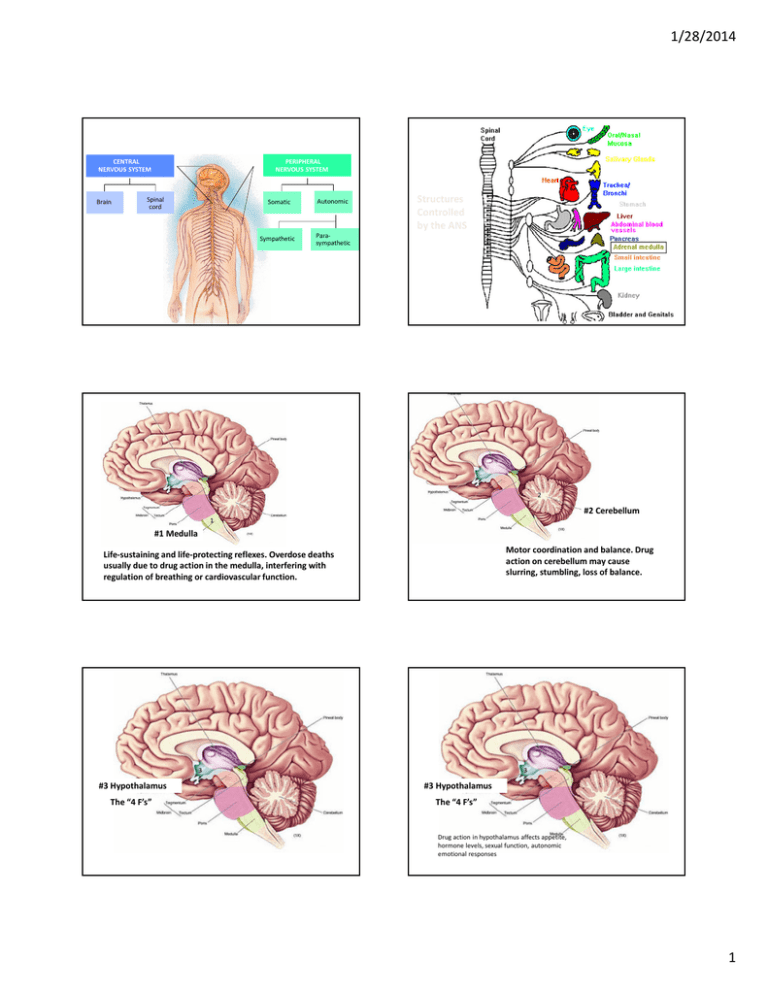
1/28/2014 CENTRAL NERVOUS SYSTEM Brain PERIPHERAL NERVOUS SYSTEM Spinal cord Somatic Autonomic Sympathetic Parasympathetic Structures Controlled by the ANS 2 #2 Cerebellum 1 #1 Medulla Motor coordination and balance. Drug action on cerebellum may cause slurring, stumbling, loss of balance. Life-sustaining and life-protecting reflexes. Overdose deaths usually due to drug action in the medulla, interfering with regulation of breathing or cardiovascular function. 3 3 #3 Hypothalamus #3 Hypothalamus The “4 F’s” The “4 F’s” Drug action in hypothalamus affects appetite, hormone levels, sexual function, autonomic emotional responses 1 1/28/2014 #4 Reticular Formation #4 Reticular Formation Arouses brain for waking consciousness A.k.a. Arouses brain for waking consciousness “Reticular activating system” #5 The Limbic System Emotion Control System Drug stimulation here may prevent sleep . Drug interference here can cause loss of consciousness. # 6 Dopamine Pleasure/Reward System (aka mesolimbic pathway) • Bundle of dopamine (DA) neurons from midbrain thru hypothalamus & nucleus accumbens, then on to cortex and limbic system T h e Nucleus accumbens L i #7 Basal Ganglia or Extrapyramidal Motor System #8 Cortex Drug action here affects judgment & reasoning, self-control, sensation/perception, contact with reality. • Initiating voluntary movements & keeping undesired movements in check 2 1/28/2014 Neuron membrane Function depends on electrical messages within the neuron (the “nerve impulse” or “action potential” and chemical messages between cells . Cleaning Up Neurotransmitter or gap • Transmitter must be removed from synapse after its release & activation of receptors. • Most neurotransmitters are recycled thru a process called “reuptake” – transported back into axon ending to be used again • Less often an enzyme breaks down transmitter into inactive components. • Clean up is critical to normal nervous system function. • • • • • • • • The “Big Seven” (Best Known Neurotransmitters That our Psychoactive Drugs Will Influence) Acetylcholine (ACh) Norepinephrine (NE) Dopamine DA) Serotonin or 5-Hydroxytryptamine (5HT) GABA Endorphin Glutamate • http://www.uni.edu/walsh/neurotransmitters.html These must happen for normal brain function. 3 1/28/2014 •Acetylcholine (ACh) • neurons using ACh =“cholinergic neurons” • Where do you find them? • Nerves to skeletal muscle • Parasympathetic N.S. • Learning and memory areas of brain • some drugs (Cognex (tacrine), Aricept, Reminyl) increase Ach actions • others (“anticholinergics”) block its action •Dopamine (DA) • Very closely related to NE (“catecholamines”) and both NE & DA loosely related to serotonin (“monoamines”) • Where is it found? • • • • basal ganglia (motor control) limbic system (emotion, mood and “reward”) frontal cortex (judgment & reasoning) hypothalamus link to pituitary gland (hormone control) • some drugs increase DA (l-dopa) • others block DA (antipsychotics) •GABA • best known inhibitory transmitter • widely distributed in CNS • seems necessary to keep neuron activity “in check” - without enough of it you might suffer from excessive neural activity causing anxiety or epilepsy • several drugs increase the effects of GABA (benzodiazepines, alcohol) •Norepinephrine (NE) • Where do you find NE neurons? • Sympathetic N.S. • Brain areas involved in appetite, arousal, mood • Some drugs activate NE receptors (“sympathomimetics”) • others block NE receptors (e.g. “beta-blockers”) •Serotonin or 5 Hydroxytryptamine (5HT) • found in • sleep & pain suppression areas of brain, • in limbic system (mood) • in sensory processing areas • several drugs increase 5HT (antidepressants) • 5HT blockers are used to decrease nausea (e.g. Zofran) Glutamate • Amino acid which acts as an excitatory transmitter almost everywhere in the CNS • PCP blocks some glutamate receptors 4 1/28/2014 •Endorphins Post-SynapticReceptor Specificity • Peptide family of transmitters which decrease pain perception and elevate mood • Narcotic analgesic drugs act on endorphin receptors • Each transmitter binds only to its receptors, but there are multiple types of receptors for each. • Drugs may increase or decrease the synaptic action of neurotransmitters. Drugs may affect only certain types of a transmitter’s receptors. •Ways Drugs May Affect Neurons • Drugs may affect any of the normal neuron processes • • • • • Production of transmitter Storage of transmitter in vesicles Release of transmitter Binding & action of transmitter at receptor sites Elimination of transmitter by reuptake or enzymatic breakdown • Drugs exert these actions by binding to proteins involved in these functions. • The study of how drugs exert their effects on cells is “pharmacodynamics” L-dopa MAOI Reserpine Amphet Botox THC Nicotine, endorphins Antipsychoticsl Cocaine •Drugs & Receptor Sites • AGONIST: A drug that triggers or increases the usual synaptic effects of a transmitter • E.g. A drug which fits post-synaptic receptor sites and MIMICS action of transmitter • ANTAGONIST: A drug prevents or decreases the usual synaptic effects of a transmitter • E.g. A drug which fits receptor site but does not trigger a response. This drug is a BLOCKER. •Drug Actions • AGONIST examples: • Narcotic pain relievers fit and activate opiate receptors mimicking the action of normal endorphin. • Nicotine fits into & stimulates ACh receptor sites, arousing the cortex like ACh • ANTAGONIST examples: • Haldol blocks DA receptors in schizos • Naloxone blocks opiate receptors • Atropine & curare (discussed earlier) block different types of ACh receptors 5
